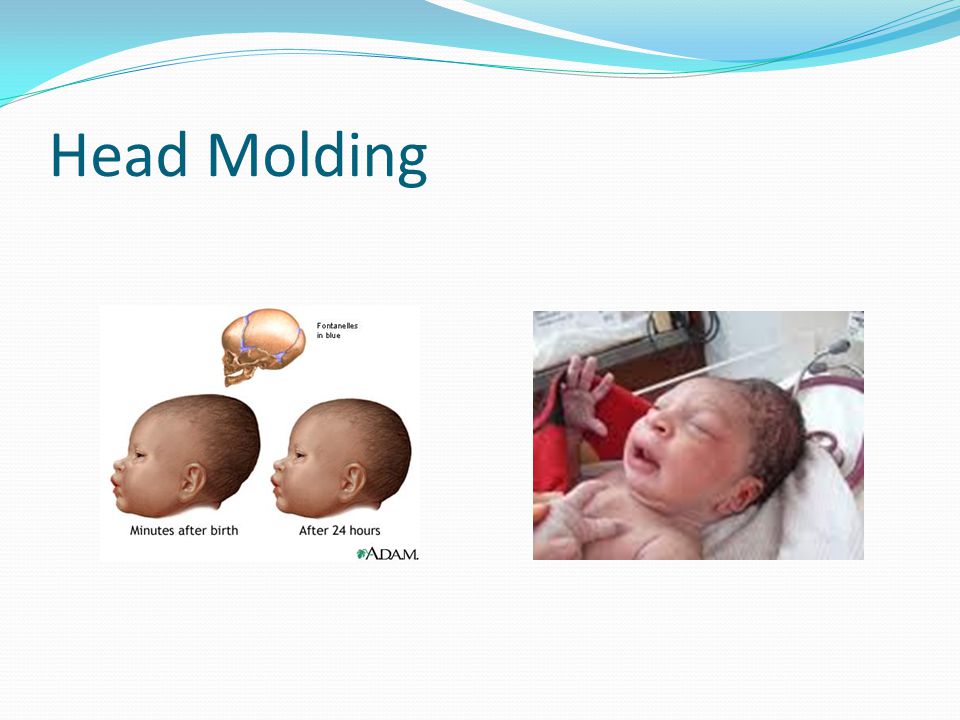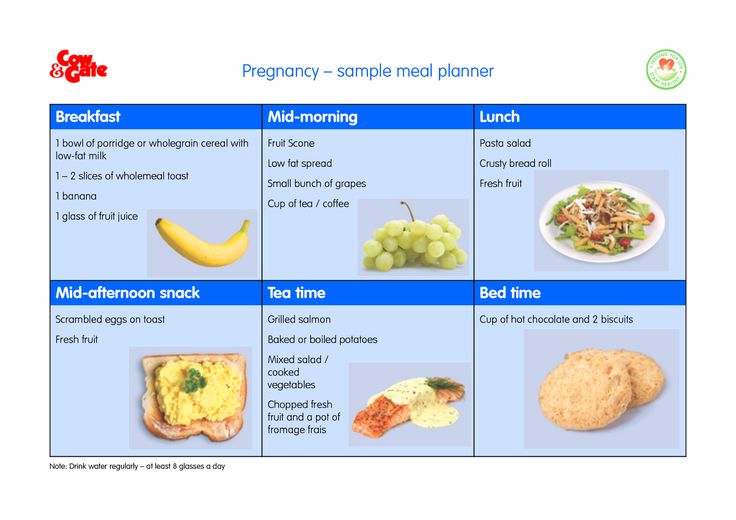How to teach your child perfect pitch
How to Help Your Child Develop Perfect Pitch – Nurture for the Future
Skip to content
One of the things that Right Brain Training tries to teach your child is Perfect Pitch. I’ve always been fascinated with Perfect Pitch because I can’t hear an off-key to save my life. I think that’s the downside of learning the piano – you never have to learn to tune your instrument because someone else does it for you. I’ve also always been fascinated by how some people can play music after hearing it just once. These are people with Perfect Pitch.
It’s quite peculiar that just as I decide I’m going to send Gavin for music lessons I get a newsletter from Accelerated Learning Methods about perfect pitch training. Although my intention for Gavin is simply to give him something fun to do, there are a number of benefits that can be derived from him learning music and possibly developing perfect pitch.
“Children who receive perfect pitch training will often have a much better advantage when taking singing or music lessons.
It also has many other beneficial residual effects in school subjects such as learning a foreign language, which utilizes many of the same brain functions.
Those with perfect pitch (musical aptitude) have developed the right brain left brain connections that allow them to play and compose music perfectly from memory…
Have you ever heard a song you listened to hours or days earlier playing in your head like a recording? The ability to transfer what you hear perfectly through a musical instrument is your right brain and left brain working together in unison.
To a music genius like Mozart, this came very easily… he heard completely new compositions in his mind, sometimes so quickly, that he scarcely had enough time to record it to paper. Some say Mozart and other musical greats heard the “music of the spheres” – melodies echoing from the universe…
This “listening ear” comes naturally to some, but for the rest of us, we can develop this ability with perfect pitch training.
Shinichi Suzuki, creator of the Suzuki Method, trains his young students to develop perfect pitch as they learn how to play an instrument, not by reading music, but by listening to it. This is exactly right brain training helps a child learn music.
Four Training Methods to Help Your Baby Develop Perfect Pitch
1. If you have a piano or any tuned musical instrument, sit with your baby and play on note, then tell him/her what that note is. And continue as long as your baby is alert and paying attention. Try humming the notes while playing them as long as you can hum in the same key!
2. Use a set of tuning forks. Tap them and hold them close to your baby’s ear as the sound resonates.
3. Play classical music as much as possible. RBE recommends using Baroque (Largo tempo) because its cadence is the same as the alpha brain wave state.
4. Google “sounds of musical instruments”. You’ll find lots of sites, some of which have free sounds of dozens of musical instruments you can listen to with your baby. They even have pictures with the sounds.
They even have pictures with the sounds.
Update on Perfect Pitch Training
Jeremy Christopher (in the comments below) has kindly shared that complex music, such as the works of Beethoven, is required to facilitate perfect pitch development during the early years when language formation takes place. He also highlighted what I felt was a particularly important point – the link between this and language development. It reminded me of something Patricia Kuhl once said about teaching children a second language – if you want to teach your child a second language, you have to start in your baby’s first year of life. Beyond that first year, your child will have lost the ability to discern sounds from languages other than those that he is exposed to on a regular basis. If this is the case for language development, perfect pitch development may also be similarly affected.
There is also some research that points to perfect pitch being an inherited trait. Although that said, environmental factors must also be in place to nurture that quality.
…perfect pitch — or absolute pitch, as it is more formally called — is not a single or neatly delimited faculty. It comes in varied degrees. And there is also reason to believe that it may be learned in earliest childhood in musical families. – New York Times
More about Perfect Pitch
Below are a few interesting videos on Perfect Pitch…
Documentary on Perfect Pitch:
Perfect Pitch – The Musical Gene:
Ear Training – Memorising Intervals:
Related:
- Music resources for perfect pitch training
- Why children should learn music
- Early Music Training: Perfect Pitch
Like this:
Like Loading...
Posted byShen-LiPosted inMusicTags:Education, music, perfect pitchSHEN-LI LEE is the author of “Brainchild: Secrets to Unlocking Your Child’s Potential”. She is also the founder of Figur8.net (a website on parenting, education, child development) and RightBrainChild.com (a website on Right Brain Education, cognitive development, and maximising potentials). In her spare time, she blogs on Forty, Fit & Fed, and Back to Basics. View more posts
Critical periods in childhood for learning : slatestarcodex
http://deutsch. ucsd.edu/psychology/pages.php?i=215
ucsd.edu/psychology/pages.php?i=215
The whole article is worth reading, but here's the summary:
Given the rarity of absolute pitch, there has been considerable speculation concerning its genesis. One view, which has been championed for over a century, is that this ability is available only to rare people who have a particular genetic endowment, and that it becomes manifest in these people as soon as circumstances allow. There are two general arguments for this view: First, absolute pitch generally appears at a very young age, often when the child has had little or even no formal musical training;second, the ability often runs in families. The problem with both these arguments is that there are alternative explanations in terms of very early childhood exposure: Babies born into families whose members have absolute pitch would frequently be exposed to pitches in association with their names very early in life, so that they would have the opportunity to develop this ability at a very young age.
Nevertheless, there is an ongoing search for a DNA marker for absolute pitch, though at this writing the search has so far proved unsuccessful.
Others have taken the opposite view; namely that absolute pitch can be acquired by anyone at any time, given intensive practice. Indeed, on browsing the Web you can encounter an impressive number of offers to supply you with training programs for absolute pitch that are guaranteed to produce success. Unfortunately, however, these claims are unsupported by the scientific evidence. The one reliable report of partial success comes from Brady who subjected himself to a heroic regimen in which he listened to training tapes for about 60 hours, following which he obtained a score of 65% correct on a test for absolute pitch. At best, Brady’s report underscores the extreme difficulty of acquiring absolute pitch in adulthood, in contrast with its unconscious and effortless acquisition in early childhood.
There is considerable evidence that absolute pitch is associated with early musical training – and the earlier the musical training the stronger the association.
In a large scale survey10, 40% of respondents who began music lessons before age 4 stated that they possessed absolute pitch, and this percentage decreased with increasing age of onset of music lessons, so that only 3% of those who began music lessons after age 9 stated that they possessed the ability. Such findings strongly indicate that the acquisition of absolute pitch involves a critical period. Although this period is generally regarded as beginning at age 3 or so, formal musical training cannot reasonably be initiated at a younger age, which leaves open the possibility that absolute pitch might be most readily acquired in infancy. ...
The case for a link between absolute pitch and speech is strengthened by consideration of tone languages, such as Mandarin, Cantonese, and Vietnamese. ... I and my colleagues have therefore been examining the conjecture that absolute pitch is initially acquired by tone language speakers as a feature of speech, and that its rarity in speakers of nontone languages such as English can be explained by the lack of opportunity to acquire it in infancy.

For students [at prestigious schools of music] who had begun taking music lessons at ages 4 and 5, approximately 60% of the Mandarin speakers met the criterion, while only 14% of the U.S. nontone language speakers did so. For students who had begun music lessons at ages 6 and 7, approximately 55% of the Mandarin speakers met the criterion, whereas this was true of only 6% of the U.S. nontone language speakers. For those who had begun music lessons at ages 8 and 9, roughly 42% of the Mandarin speakers met the criterion, whereas none of the U.S. nontone language speakers did so. There were no effects of gender.
I've been thinking about this topic ever since a list of educational myths posted here called the following claim a myth:
There are critical periods in childhood after which certain things can no longer be learned.
The shakiness of that claim calls other parts of the list into question as well, making it hard to tell which listed myths have been debunked by evidence, and which by wishful thinking. The question of origin and development of absolute pitch carries implications for genetic determinism, malleability of human ability, and early learning.
The question of origin and development of absolute pitch carries implications for genetic determinism, malleability of human ability, and early learning.
tl;dr: Absolute pitch seems to have a critical early childhood development period similar to that of language development, and it is more frequent in speakers of tonal languages such as Mandarin Chinese.
Cheers!
How to develop an ear for music?
Photo: Jeremy Vessey
Approximately 5% of the world's inhabitants have an absolute ear for music. Most of them have more or less developed hearing. There is a third category of people: they are completely incapable of perceiving musical sounds. This is due to the very rare pathology "amusia", which occurs when parts of the cerebral cortex are damaged.
Ear for music is not a superpower, it can be developed without the intervention of supernatural forces and the bite of a radioactive song-nightingale.
If you don't notice that the bird under the window is singing dissonant harmonies, i.e. do not have absolute pitch, and are not observed by neuroscientists, i.e. do not suffer from "amuseia" - this article is for you.
Ear for music ≠ the ability to sing
Doubts about your own abilities often begin after an unsuccessful performance of your favorite hit in karaoke and jokes from friends about your vocal talents. But singing past the notes is not a reason to write yourself down as a musical loser. In professional literature, the term "lack of coordination between hearing and voice" occurs. It's a paradox, but if you hear that you're out of tune, this is proof of an ear for music. And coordination can be developed.
Method No. 1: solfeggio with a teacher
Perhaps the most reliable way is to find a solfeggio teacher. He will teach you musical notation, explain the concept of mode, show you how to build intervals and chords. It feels like solfeggio is musical mathematics. But thanks to her, you will delve into the essence of music and develop your ear perfectly.
It feels like solfeggio is musical mathematics. But thanks to her, you will delve into the essence of music and develop your ear perfectly.
Hearing develops in two ways: active and passive. Active is when we intotone (sing), and passive is when we listen to music, write dictations, determine chords and intervals by ear.
The passive way is the most comfortable way to start learning. After six months of competent and intensive solfeggio lessons without singing in the lesson, you will begin to sing purely automatically, as your ear will get used to the sound patterns and train.
Musicologists distinguish between harmonic, polyphonic, rhythmic, textural, timbre, intonation and other types of hearing (about 10). If you seriously want to pump your ear for music, contact a specialist. It will create a program that matches your data, and the results will appear faster.
Method 2: self-study
Fix the result at home. There are many simple but effective exercises for developing hearing and coordination. Sit down at the piano, synthesizer or open sites online-pianino.ru or recursivearts.com with the virtual instrument and start exercising.
Sit down at the piano, synthesizer or open sites online-pianino.ru or recursivearts.com with the virtual instrument and start exercising.
Scales
Sing the scale up and down: “Do, re, mi, fa, sol, la, si—do, si, la, sol, fa, mi, re, do.” Test yourself on the instrument. So the inner ear will get used to working, and each time the intonation will improve.
Chromatic scales
Now press both the white and black keys in succession, starting with "do" in an octave range that is comfortable for you, and sing each sound in "la" or "du". Focus and keep your performance clean.
Arpeggio
Play: “C, E, G, C (upper), G, E, C.” Sing on "la", and better with the names of the notes - they are indicated on the keys.
Intervals
Intervals are the spaces between notes. Build them in the following order: “Do-re-do, do-mi-do, do-fa-do”, etc. Test yourself with an instrument. At first, sound jumps will be difficult to repeat, but soon everything will work out.
Do each exercise 20-30 times, then the ear will remember how the notes sound, and the voice will feel how to sing them.
Take the time to read these books. They contain the necessary theory and many useful exercises and tips.
- P.N. Berezhansky "Absolute ear for music"
- G. I. Shatkovsky "Development of musical ear"
- S.M. Maikapar "Musical ear, its meaning, nature and features and the method of proper development."
Follow us. It is interesting.
Teachers' advice. The best performances. Concert posters.
Method no. 3: practice with a computer program
We found several web services that will help you learn to distinguish between notes, intervals and chords: programs offer exercises and record progress. You can use online or install on a computer, tablet, smartphone.
- EarMaster 7 is the best solution in our opinion.
- Ear Teach
- Pitch Improver
- Auralia 5
Method No.
 4: Video on Youtube
4: Video on Youtube Lessons with a teacher are the basis for learning solfeggio. We recommend using Youtube videos as an aid in preparing for lessons. You can subscribe to the Staccato school's blog "Don't Sing in Front of Me", where we talk about various vocal techniques, but sometimes also touch on the topic of ear development and the selection of famous songs.
When can we expect the result?
It is difficult to say exactly when you will feel progress. It all depends on the source data and your efforts. Do not expect magical metamorphoses: hearing develops according to the dialectical law of the transition of quantity into quality.
Do not expect magical metamorphoses: hearing develops according to the dialectical law of the transition of quantity into quality.
We do not rule out that at some point you will want to spit on melodic wisdom, because you can sing out of tune, but from the heart! But if you don’t quit, you find a competent solfeggio teacher, you devote 20-30 minutes a day to home exercises and classes with web services - the result will really amaze you.
First trial lesson
By filling out the form I give my consent to the processing of personal data
Konstantin, your application is already in the administrator's mail.
There is not a soul at school now. Even the instruments sleep. The administrator will call you back from the number 8 (812) 501 83 83 as soon as he sees your application. Have a good day.
An error has occurred! Your application has not been sent!
1st step
Acquaintance with the teacher. You tell your learning goals and what results you want to achieve.
2nd step
The school teacher determines your musicality: ear, sense of rhythm, intonation.
3rd step
Based on your goals and taking into account the current data, the teacher will propose a program for your training.
How to develop an ear for music and voice
If your child dreams of a musical profession and you are wondering if it is possible to develop abilities, do not hesitate - ear for music can be developed even at home, both in children and adults. There are many special techniques and exercises for this, but before moving on to them, let's figure out what an ear for music is for, what it is like, and why you need to learn pure singing.
Varieties of hearing
Absolute pitch. This is the ability to accurately identify and play any note without prior tuning with the instrument. People with absolute pitch, or, as they are called in the musical environment, "absolutes" can accurately name the pitch of any sounds - a guitar string, a fire siren, or birdsong.
Relative hearing. Its owners determine the pitch of the note and can sing it only after tuning - a chord or a sound that sets the key. This type of hearing usually develops in the process of learning music.
Melodic hearing. Musicians with this type easily memorize, select and reproduce melodies. They feel the direction of the melody well and hear the intervals of which it consists.
Harmonic hearing. Gives you the ability to easily pick up accompaniment to any melodies. The perception of harmony helps to hear what intervals and chords the music consists of, to determine their relationships and consonance. This type also develops with the help of music lessons.
Inner hearing. This is the ability to imagine the sound of a piece of music without using a voice or a musical instrument: to “hear” a note in the head before it is played.
Rhythmic hearing. This is the ability to hear, feel and correctly reproduce various rhythmic patterns. Essential for musicians, actors and dancers.
Essential for musicians, actors and dancers.
The purity of singing is affected by a number of factors:
- Vocal apparatus is not well formed in vocalists of preschool and primary school age.
- Lack of singing coordination. In this case, the vocalist hears the melody, but cannot reproduce it correctly.
- Narrow vocal range. Notes that are out of range, too high, or too low for the player almost always sound unclean.
- Wrong (low) vocal position. When the soft palate is not raised high enough, the effect of understatement appears - the sung notes sound, as it were, below the required height.
- Wrong breathing. There is a specific vocal breathing, aimed at maintaining the equal intensity of all sounds during singing, their setting "on a support". With incorrect breathing, it becomes impossible to control the support and the melody “floats”.
- Incorrect vowel formation. The articulation of vowels in speech differs significantly from the articulation in singing.
 The formation of vowels in a speech manner affects the purity of intonation.
The formation of vowels in a speech manner affects the purity of intonation. - Transfer of speech skills to singing. The equation of singing intonations with the intonations of speech generates incorrect sound formation - low and deaf.
- Wide leaps in melody. A melodic pattern with a large number of wide jumps provokes the vocalist to change the position of the larynx, which also affects the intonation purity.
Since there are many reasons for false singing - auditory, physiological, vocal, then an integrated approach is needed to solve this problem. In music schools, work on hearing is carried out for the most part in solfeggio lessons. But singing scales, intervals and exercises is not enough. Work on the purity of intonation should also be carried out in vocal classes.
Vocal lessons in our studio
The music school provides a good basis for improving your ear for music. But in some cases, you can limit yourself to exercises at home. The main thing is to observe the regularity of training and adhere to a clear program. For classes, you will need a musical instrument, you can use sites or applications with a virtual piano. You can develop an ear for music in active and passive ways. Active involves singing, and passive involves listening to music, writing musical dictations, determining intervals and chords by ear. You can use special applications that will help you learn to distinguish notes, intervals and chords from each other.
For classes, you will need a musical instrument, you can use sites or applications with a virtual piano. You can develop an ear for music in active and passive ways. Active involves singing, and passive involves listening to music, writing musical dictations, determining intervals and chords by ear. You can use special applications that will help you learn to distinguish notes, intervals and chords from each other.
To develop your musical ear at home, you can also use the following selection of exercises:
- Scales. Sing the sounds in order from “to” to “to” up and down, checking yourself on the instrument or through special applications after each note sung.
- Intervals. From one sound up and down, sing different intervals, playing along with yourself on the instrument.
- While listening to music, follow the notes as you play. This exercise develops inner hearing.
- Play any musical instrument with familiar melodies by ear.
- Sing along to your favorite songs.

Learn more












